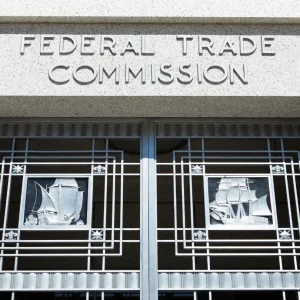
A deal that would impose a minimum global corporate tax rate of at least 15% has been agreed to by G7 countries. Finance ministers also committed to the principle of taxing companies where they operate rather than where they are headquartered, to account for the increasingly globalised digital economy. But there’s a long way to go before the deal is fully realised, and big questions remain over what it might mean for the taxation of tech giants.

The deal follows a two-pillar framework proposed by the OECD, a group that represents the world’s largest economies, in part to address the low tax burden of the tech giants. Pillar One proposes that multinationals should be taxed where they operate; Pillar Two proposes a 15% minimum corporation tax rate. On Saturday, finance ministers from the G7 countries announced their support for the framework.
UK chancellor Rishi Sunak hailed the deal as “a truly historic agreement”, but it has potentially complicated implications for Britain. At present, the UK, France, Italy and some other countries have imposed digital services taxes targeting Big Tech, as a temporary measure before more sweeping global tax reforms are implemented. But the US has pushed back fiercely, threatening 25% tariffs on more than $2bn worth of imports from six countries over their digital services taxes just before the G7 deal was announced.
The UK has confirmed that its Digital Services Tax (DST), a 2% tax on UK-derived revenue from search engines, social media services and online marketplaces, will remain until new “Pillar One” rules are in place. But although it’s been agreed to in principle, implementing Pillar One will be difficult.
“It will require amendments to the thousands of tax treaties which govern the ways one country can impose tax on other countries’ residents,” says Dan Neidle, partner at global law firm Clifford Chance. “However, amending treaties takes time, and many countries have a complex and politically tricky ratification process. The US, in particular, is likely to prove a problem – Biden has a bare majority in the Senate and, given the huge amount of lobbying that is likely to go on, it’s not clear to me that the US will be able to ratify.”
The global minimum tax rate proposed under Pillar Two “in no sense replaces the [UK’s] DST” because it will apply to tech giants’ US revenues, says Neidle. But the country is likely to earn more from the Pillar One proposal, which includes a 20% tax on multinationals with a profit margin above 10%, than it does from the DST. It would therefore make sense for the UK to drop the DST when the Pillar One rules are implemented.
Next steps for the G7 tax deal
The problem is what to do in the meantime, as negotiations inevitably drag on. While the Pillar Two agreement can be imposed unilaterally, Pillar One requires a global agreement and US legislation clearing Congress. If the UK pre-emptively drops the DST in the expectation of an imminent Pillar One agreement, this could mean depriving the country of the ability to raise taxes from tech giants for years, and potentially indefinitely, if Washington struggles to get the Pillar One agreement ratified.
Views on whether the US is likely to move ahead with retaliatory tariffs against countries like the UK that refuse to drop the DST are mixed. “I would view the US announcement as designed to ensure there remains pressure in the system to move forward and find a multilateral solution to the question of the taxation of the digital economy,” says Ross Robertson, international tax partner at accountancy and business advisory firm BDO. “I would expect the US to not impose these measures provided progress continues to be made at the level of the OECD under its Pillar One and Pillar Two proposals.”
But this could change if Pillar One proposals are seen as inadequate by countries that currently have a digital services tax in place. If those countries feel that not enough profit made within their borders is taxable, they may push back, says Robertson. “And if they are not willing to surrender their rights to implement unilateral digital service tax type measures, the US may continue to push the imposition of tariffs, at least for those countries which do not roll back on any existing or proposed measures.”
Global negotiations will continue to be conducted among 139 countries at the OECD in Paris. The G7 agreement will face its first test when it is put before the G20 group of nations, which are meeting in Venice next month. The aim of the OECD is to find a consensus solution, rather than allowing the G7 to define the solution.
“The G7 is not a world government,” says John Cullinane, director of public policy for the Chartered Institute of Taxation. “The ‘prize’ that the large developed Western nations have won for themselves is to set out a united front to get their compromise adopted as the basis for global agreement (or at least acquiescence): facing down the opposition of low-tax small countries who are used to winning from the game of international tax competition; and cajoling the developing countries – including the likes of China and India where many multinationals have large numbers of workers – to accept the Western vision of what is a fair share, based on where sales are made.”






